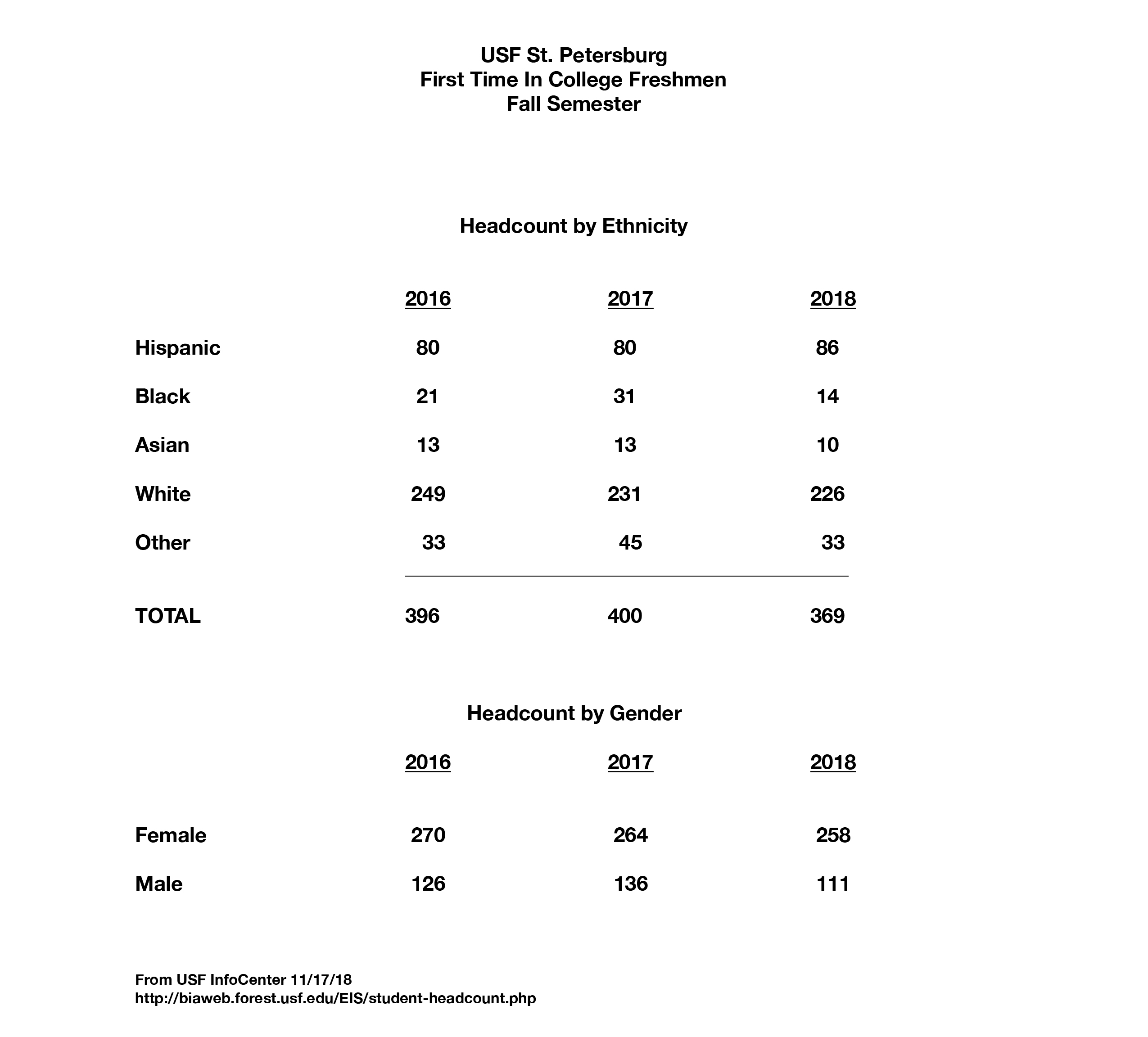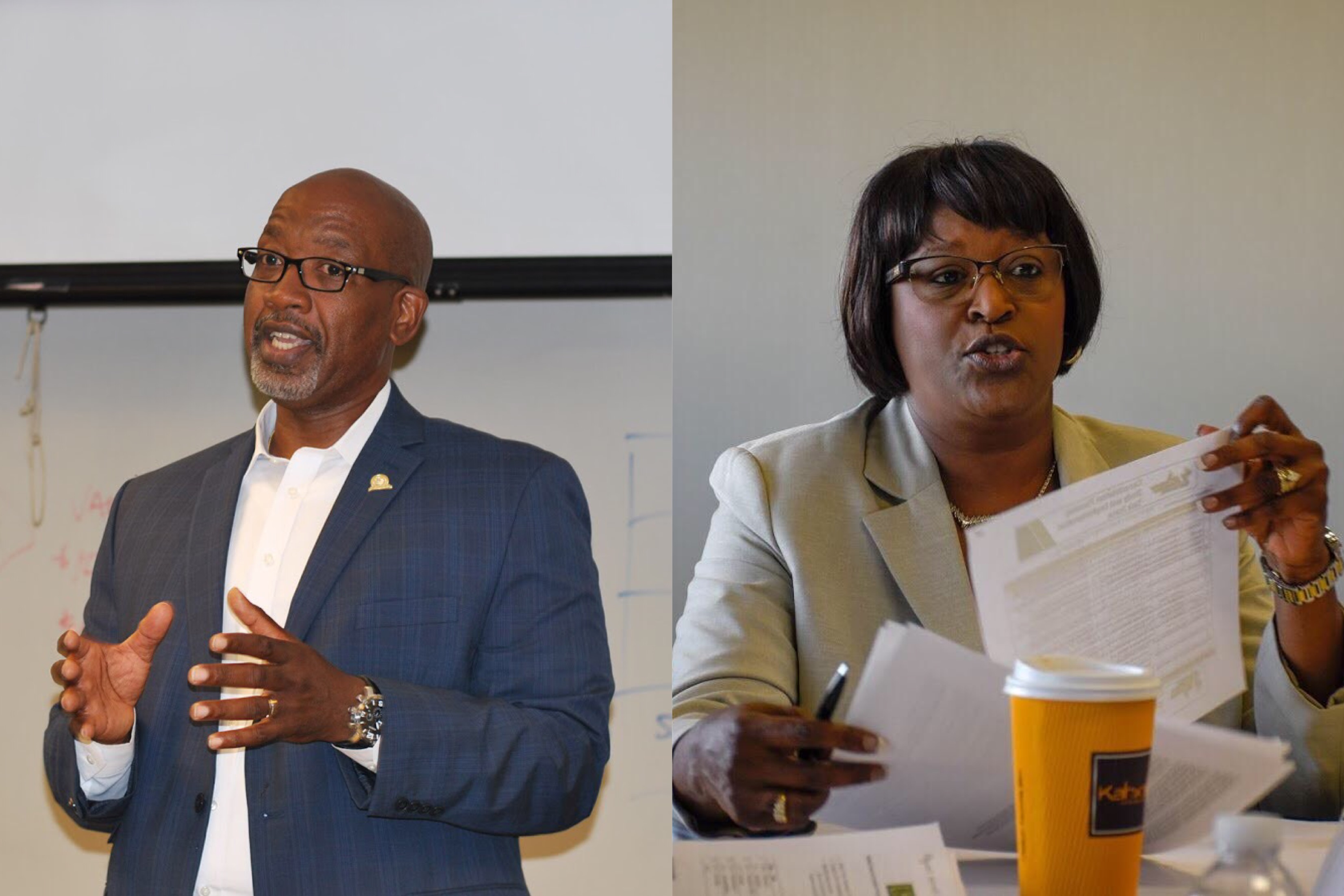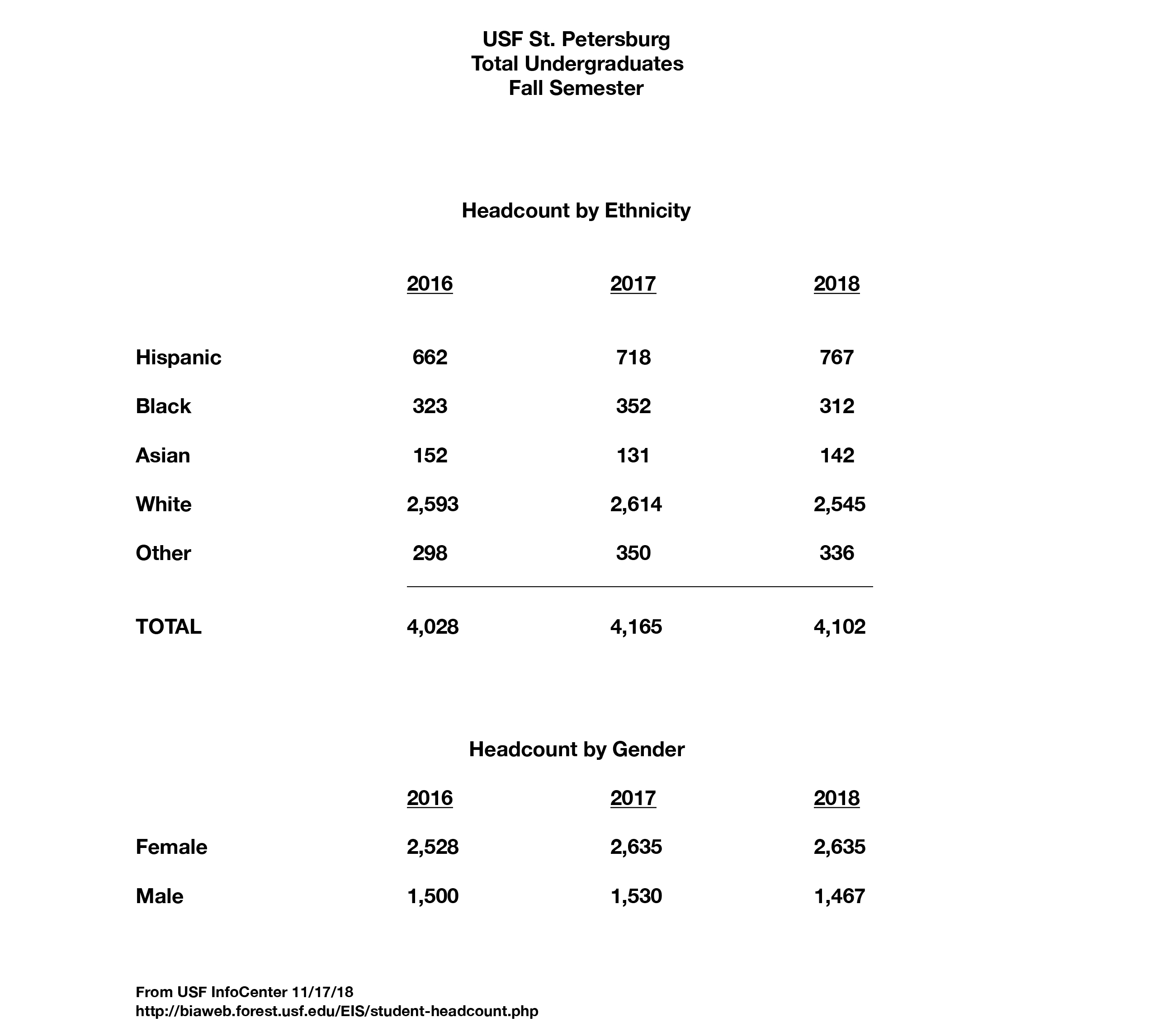Pinellas County Commissioner Ken Welch (left) worries about this fall’s enrollment numbers, but St. Petersburg College President Tonjua Williams says it is too early to draw conclusions. Welch photo courtesy of Lauren Hensley; Williams photo, Emily Bowers.
By Nancy McCann
He is a third-generation St. Petersburg resident and chair of the Pinellas County Commission with ambitions to run for mayor in 2021.
She was raised by a single mother in the city’s Midtown neighborhood and rose through the ranks to become president of St. Petersburg College last year.
As champions of USF St. Petersburg, both Ken Welch and Tonjua Williams are aware of fears that the pending consolidation of USF’s three campuses might jeopardize one of the St. Petersburg campus’ most distinctive traits.
It has long been regarded as a school that embraces students who might not be accepted at larger state universities, especially some minority students.
But Welch and Williams react quite differently to the fact that the number of incoming black students this fall was down by 17, and the total number of undergraduate black students was down by 40.
Welch, a 1985 USF St. Petersburg graduate, is concerned.
In raising the bar for admission this year, he said, the St. Petersburg campus put itself out of reach for potential students who might have eventually thrived here.
“I’m not surprised (by the drop in the number of black students); it’s kind of common sense,” said Welch. “If you are going to raise the bar, some students are going to drop off.”
But Williams, who has a master’s from USF Tampa and a doctorate from Barry University, said it is much too early to draw any conclusions about the dip in black enrollment.
Many minority students with high grade point averages are going elsewhere, she said.
“We need to work on expanding the community’s awareness of everything St. Petersburg has to offer,” said Williams. “I think we (USF St. Petersburg) are the best-kept secret, and it’s time for the secret to come out. We’ll get there.”
Like Williams, university officials caution against drawing any conclusions from this year’s enrollment numbers.
Simple assumptions about enrollment should not be made due to the complexity of the admissions process, said Regional Chancellor Martin Tadlock, and the bigger picture is that the St. Petersburg campus is “trying to take steps to become more diverse.”
He described USF Tampa as a “majority-minority” campus, where white students make up about 49 percent of the undergraduates this semester.
White students account for about 62 percent of the undergraduates at USF St. Petersburg, according to the USF InfoCenter.
“Diversity is a broad term, not just meaning race,” Tadlock said. “Sixty-eight percent of our students are female. Men are underrepresented.”
Serge Desir, USF St. Petersburg’s director of undergraduate admissions, said that one of the ways to “keep USFSP more accessible to a broader range of students” is to intentionally aim at a lower average GPA and lower average SAT or ACT score for first-time-in-college students admitted in the summer and spring semesters.
For spring 2019, the goal is an average GPA of 3.3 to 3.5, according to Desir. That is considerably lower than the average GPA of 3.8 that was targeted for incoming freshmen in the fall 2018 semester.
In USF St. Petersburg’s practice of rolling admissions, adjustments are made throughout the process: The more students admitted with very high GPAs, the more can be admitted with GPAs in the lower ranges to achieve the desired average.
In January, USF St. Petersburg changed its minimum requirement and stopped accepting students with GPAs under 3.0. Before that, the university would occasionally accept students with GPAs down to 2.7, said Desir.
“There are concerns that students with GPAs under a 3.0 may face greater retention, persistence, and graduation challenges than those with stronger academic performance,” Desir said in an email to The Crow’s Nest.
Williams, a member of the USF Consolidation Task Force subcommittee on student success, has repeatedly emphasized the importance of student access.
Summer and spring enrollment for first-time college freshmen is a good option for students who do not meet the requirements and goals for fall enrollment, she said, but it “should not be the only option.”
A new program called Pinellas Access to Higher Education (PATHe) is a collaboration between USF St. Petersburg and SPC that is designed to counsel middle and high school students and their families about college admissions and help ensure that county students continue to have access to the university.
Williams said the program is important for many students who need to focus on their academic performance and understand what is necessary for their college applications.
Williams, who said she was a first-generation college student who lived in poverty, points to herself as an example.
“To get there (college), someone reached out to me to help,” she said. “I am very, very happy that St. Petersburg has Dr. Tadlock and his leadership and vision, which are going far” to provide opportunities for families.
The average high school GPA of new freshmen accepted at the St. Petersburg campus is slowly rising.
The average high school GPA of first-time-in-college black students in summer and fall rose from 3.47 in 2014 to 3.63 in 2018, according to information provided by Lauren Haddad Friedman, director of institutional research at the St. Petersburg campus. For Hispanic students, it rose from 3.63 to 3.73, and for white students, from 3.63 to 3.78.
The average high school GPA of new male freshmen rose from 3.49 to 3.61; for female freshmen, from 3.70 to 3.82. The average high school GPA of all new freshmen at USF St. Petersburg increased from 3.62 in 2014 to 3.76 in 2018.
One of the state preeminence metrics that the three campuses combined will soon need to meet requires the USF system each year to have an average weighted GPA of 4.0 or higher for fall semester incoming freshmen. (A weighted average includes points added by high schools to account for more difficult classes, resulting in GPAs that can be above 4.0.)
Although Welch said he thinks Tadlock and Williams “are doing some innovative things to get kids into the loop early, to know what pathways they can take,” he has many questions.
Embracing higher standards “raises the question of accessibility for a good, B student,” he said. “Where are good students supposed to pursue a standard education? Is it the state college system? If so, are we applying the necessary resources?”
Decline in number of black students
USF St. Petersburg officials caution that it is too early to draw conclusions, but statistics from the USF InfoCenter show that the number of black, first-time-in-college students this fall declined by 17 and the total number of black undergraduates declined by 40. The total number of all first-time-in-college students and all undergraduate students also declined.





